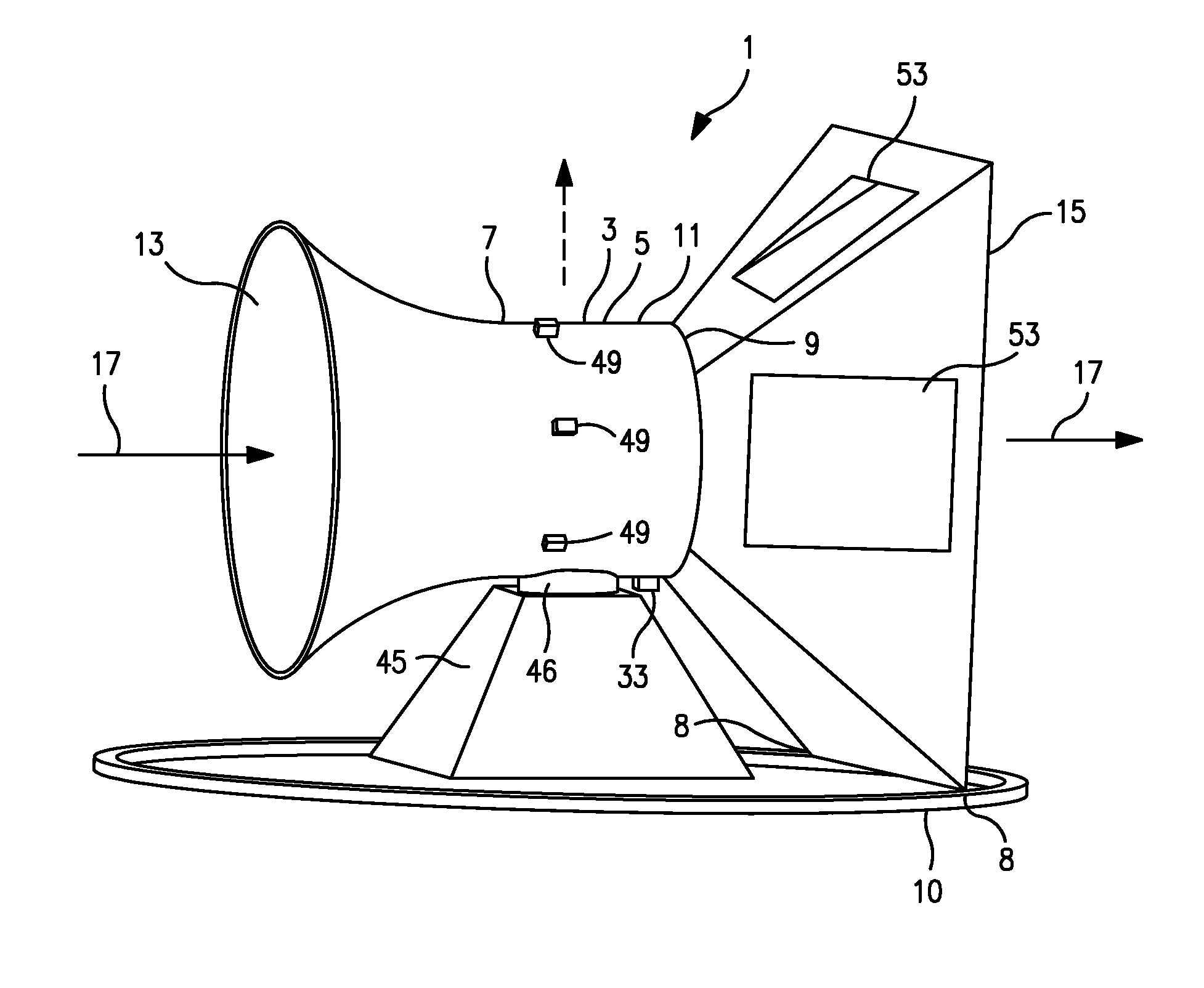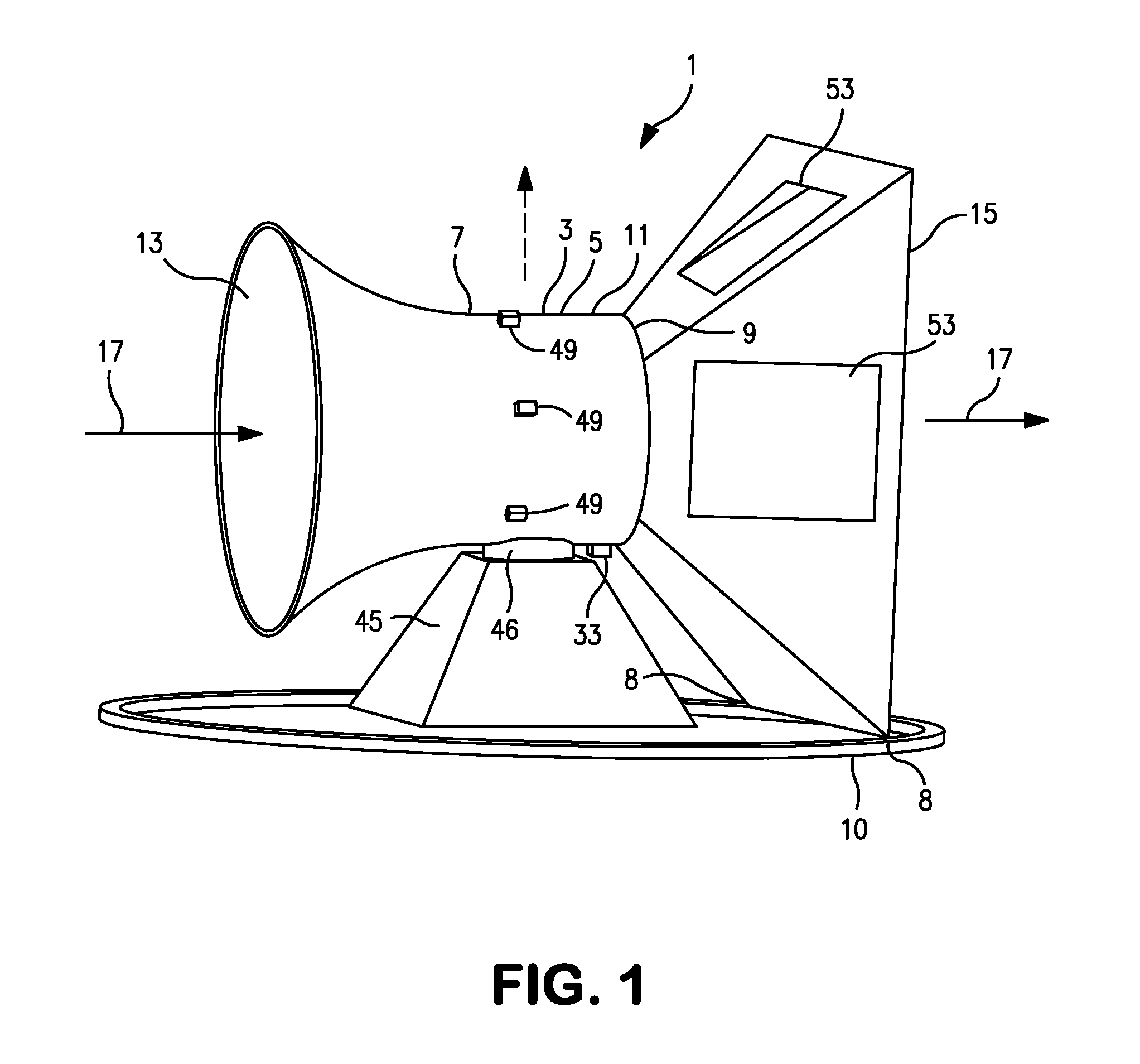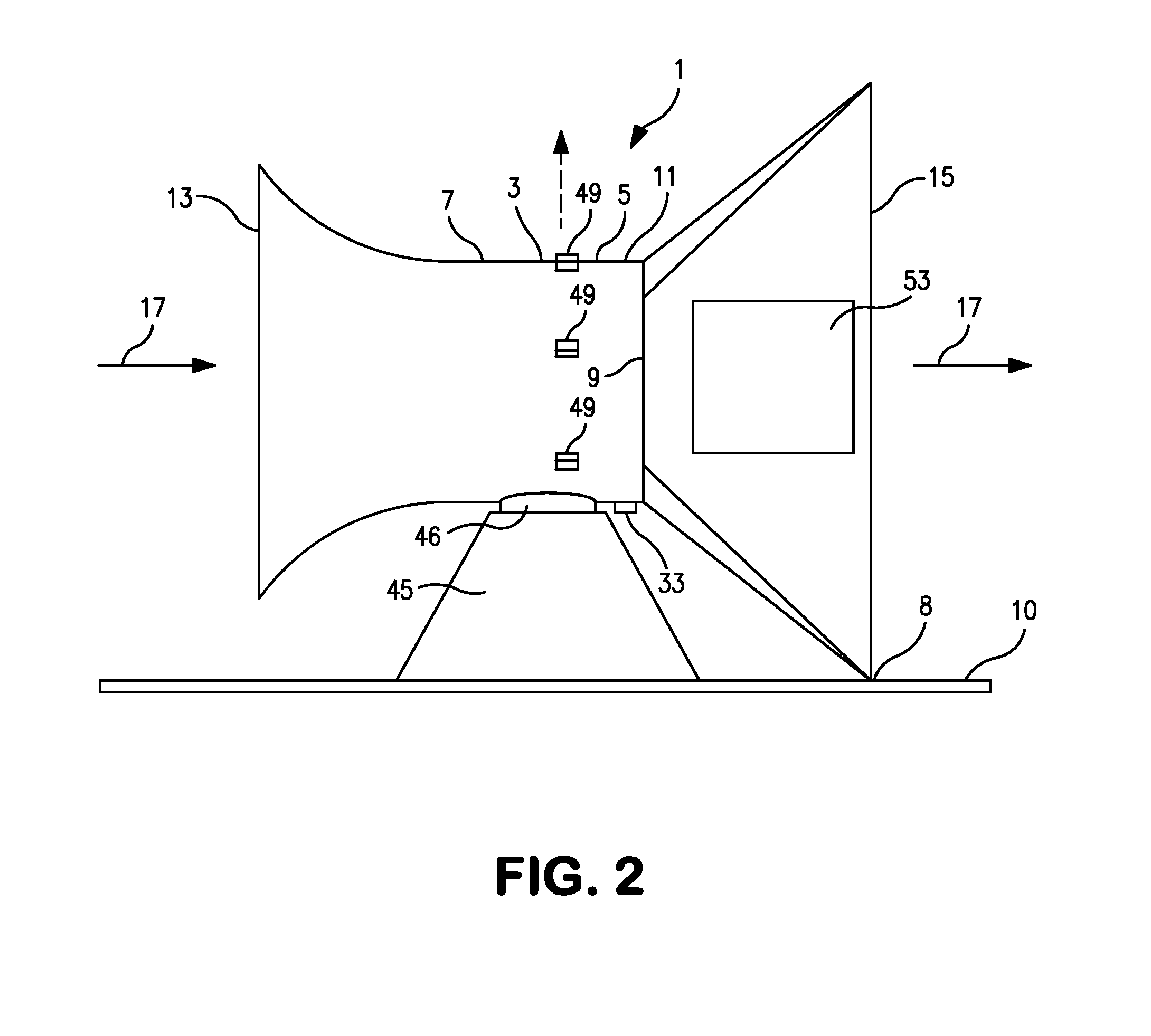Synchronous Induced Wind Power Generation System
a technology of synchronous induced wind power and wind power generation, which is applied in the direction of electric generator control, liquid fuel engine, machines/engines, etc., can solve the problems of inability to achieve large-scale adoption of wind power as an alternative means, difficulty in repair and maintenance of large-scale systems, and limited effect of conventional wind power generation systems
- Summary
- Abstract
- Description
- Claims
- Application Information
AI Technical Summary
Benefits of technology
Problems solved by technology
Method used
Image
Examples
Embodiment Construction
[0042]As illustrated in FIGS. 1-3, a synchronous induced wind power generation system 1 is provided that may be conveniently deployed in urban environments, such as on the tops of flat roofed buildings. In fact, this abundantly available urban area is one of the most advantageous locations for placement due to the higher ambient winds flowing over the roof. Further, the low noise level produced by the system 1 of the present invention during operation thereof is unobtrusive to occupants and neighbors. The electrical load of buildings can be partially met by the system of the present invention by converting the otherwise unused wind energy flowing across the roof into electrical power.
[0043]In particular, as shown in FIGS. 1-3, the present invention provides a synchronous induced wind power generation system 1 comprised generally of a turbine-generator section 3, a turbine-generator unit 21 disposed therein, a direction orientation means 45 such as support base or “lazy Susan” turnta...
PUM
 Login to View More
Login to View More Abstract
Description
Claims
Application Information
 Login to View More
Login to View More - R&D
- Intellectual Property
- Life Sciences
- Materials
- Tech Scout
- Unparalleled Data Quality
- Higher Quality Content
- 60% Fewer Hallucinations
Browse by: Latest US Patents, China's latest patents, Technical Efficacy Thesaurus, Application Domain, Technology Topic, Popular Technical Reports.
© 2025 PatSnap. All rights reserved.Legal|Privacy policy|Modern Slavery Act Transparency Statement|Sitemap|About US| Contact US: help@patsnap.com



